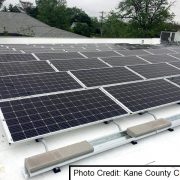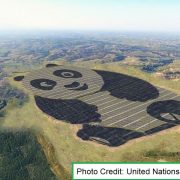Key Equipment Finance to fund 22.1 MW community solar portfolio in Massachusetts
By Conor Ryan
July 20, 2017
Read the original article Here
Key Equipment Finance, an affiliate of KeyCorp, announced Wednesday that it has provided funding for 16 community solar projects across Massachusetts for both community solar solutions provider Clean Energy Collective (CEC) and global energy developer ENGIE.
As part of the financing deal from Key Equipment Finance, CEC and ENGIE will own and operate the community solar projects and sell the generated energy to local utilities.
The combined 16 projects are expected to have a total generation capacity of 22.1MW, which is equivalent to fully offsetting energy for 3,700 residential homes.
Luis Gutierrez, vice president of energy finance for Key Equipment Finance’s Energy Solutions team, said: “ENGIE and CEC are industry leaders using Key Equipment Finance’s financing solutions to bring a broad expansion of community solar to customers across Massachusetts. Customized financing plays a vital role in bringing the benefits of community solar to more customers, which contributes to Key’s broader sustainability goals.”
The 16 community solar projects in Massachusetts are already constructed and interconnected — with the projects set to serve customers in the Eversource and National Grid utility territories.
These projects include systems developed in the towns of Sutton, Williamsburg, Orange, Goshen, Phillipston, Uxbridge, West Bridgewater, Kingston, North Adams, Clarksburg, and Wareham.
The 25-year lifespan of the systems will produce a solar energy output equivalent to cutting down 1 billion pounds of carbon dioxide, planting 1.5 million trees or eliminating 1.1 billion miles of driving.
Tom Sweeney, CEC’s president of renewables, said: “Key Equipment Finance’s partnership has allowed CEC to bring its RooflessSolar community solar options to more Massachusetts customers, giving them greater choice in how they meet their power needs. Funding community solar projects can be a very complicated and capital-intensive process, and we are proud to be collaborating with Key Equipment Finance and ENGIE to ‘uncomplicate’ clean energy access and sustain the growing energy movement in Massachusetts.”


